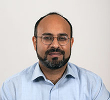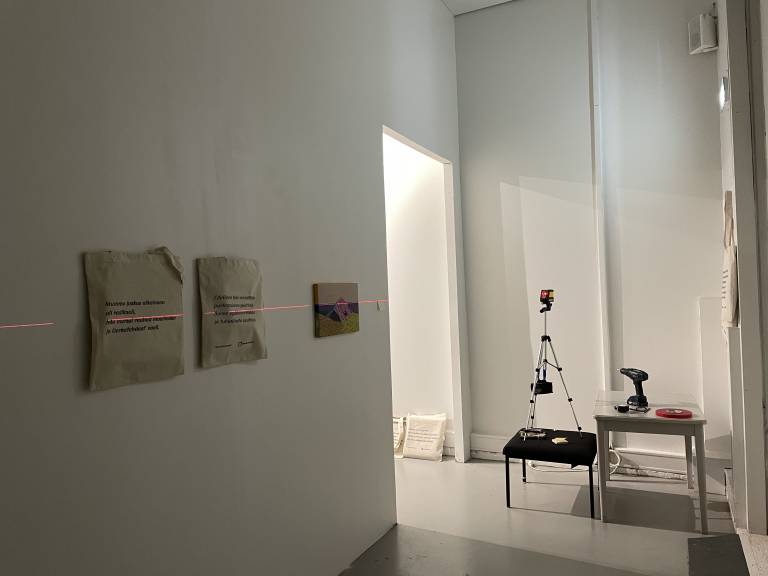
”If madness, modernity, and meaninglessness are the seeds of terror, then culture is the soil in which these seeds grow, take root, bloom, and spread death. The more fertile the soil, the easier it is for such deathly outgrowths to crop up.”
Alustus! The recent truck attack in Drottninggatan in Stockholm, which left four dead and a dozen injured, is a stark reminder that the radius of religiously motivated violence from the Middle East is widening in scope. It has been suggested by some in Finland that the Stockholm attack was unusual, which many may implicitly take to mean that there is not much reason to worry.
I would contest that implication. It is true that we have not experienced similar violence in Finland. But we can see just as readily from here that there is a worldwide spread of such violence to new countries, and to new areas and with new tactics in societies that have already been suffering (such as shrine bombings or lynch mobs in South Asia). An even graver issue is the spread of discourse of Islamism and terror everywhere, and from all sides. And, it is notable that the rhetoric of “terrorism” comes from those concerned with counter-terrorism or at the forefront of the grammatically puzzling “War on Terror.” Of course, those who perpetrate such attacks claim to commit violence but they do not often call it “terror.”
Seeds of terror
The primary tactics of counter-terrorism are “seek and destroy.” Counter-terrorism focuses on pinpointing and eliminating leadership of known “terrorist” organizations or their support network, such as those who are known to finance or publicly support them. Similar strategies are applied to terrorist cells or to lone-attackers and foreign fighters from Europe who became radicalized, or disillusioned youth such as apparently the case in Stockholm. There is little public information about the success, or mis-steps, to allow for a comprehensive evaluation of the strategy. However, the existence of some publicly available stories of terrorists (analyzed by Professor Oliver Roy) suggests that hundreds of attacks have been averted by heightened security. But—as the attacks just this year in France, USA, UK, and Sweden show—the strategy has not been as successful as had been expected when it was formulated after the 9/11 Commission report in the USA.
This was the beginning of the search for root causes, or the ”seeds of terror.” Those looking for root causes, particularly for terrorism in Europe, can now choose from one or a combination of three solutions to why terrorists exist:
(i) discontent with normalcy: deranged psychopaths or infantile, pre-modern minds;
(ii) discontent with losing: marginalized or economically repressed losers, driven to suicide and revenge (or, in developing countries: driven by extreme poverty); and
(iii) discontent with modernity: alienated nihilists driven by loss of meaning, fighting for an ideological alternative, and searching for spirit in a de-spirited, global juggernaut of neoliberal “zombie capitalism.”
Variations can be broadly categorized into this typology. (I disregard here the obviously Islamophobic and discredited idea that there is something inherently violent and terrorist about Islam as a religious way of life.)
All three arguments about discontent are correct to a degree, and the reported narratives of terrorists support them (although the narratives are gathered by interviewers deemed psychologically normal, integrated/ successful, and modern-Western). One very important feature they all have in common is that they are context-neutral to a large extent. That is, the same explanations work whether it is in California, Afghanistan or Sweden. But do they qualify as final explanations for an attack like that in Stockholm?
Discontent with discontent: The problem with seeds
Too much evidence has piled up against any of these answers as being able to account for such attacks. The first can be readily dismissed. The overwhelming majority of narratives reported from those who committed or planned such attacks and were arrested, show that they are cognitively developed and quite capable of logical argumentation.
Also, this explanation fails to account for the fact that not only do Islamists use high-modern technology, but also many known organizations like al-Qaeda have deep tendrils in university campuses across South and Southeast Asia. In other words, looking for deranged behavior is not a useful predictor of terrorism.
The second “seed” of terror is more widely held. Indeed, it has become the guiding mantra of immigration policies in Western Europe and North America. But, what about the top leadership of extremist organizations like al-Qaeda? One could hardly contend that Osama bin Laden was marginalized or not integrated. Similarly, lone attackers in Ft. Lauderdale, San Bernardino, Paris, and London, were all employed, educated individuals fluent in the lingua franca of the country. So are the bulk of foreign fighters.
Moreover, the support networks for these individuals and extremist organizations are not comprised of dispossessed members of society: quite the contrary. By definition, those who financially support or ideologically lead such support are well off and well placed. So, this explanation can account for some of the attack cases and not others, leaving it handicapped as an ultimate “seed” of terror. This is not to say that immigrant integration policies, say in Finland or Sweden, are not useful: they most certainly are. But it is not all that useful to expect them to cut extremist violence.
Finally, Jean Baudrillard’s semiotic analysis of the 9/11 New York attacks was a forerunner of ideological explanations that claim such attacks are a violent reaction against the tide of neoliberal capitalism. Recently, Olivier Roy put it this way: “radicalisation is a youth revolt against society, articulated on an Islamic religious narrative of jihad.”
But it seems naïve to connect the Stockholm truck attacker with Wall Street Occupy activists, feminists, and equity-minded politicians who are all disillusioned with neoliberal capitalism. Are they all terrorists? Anyway, if terrorists are so alienated from the modern world, why is their ideology so dependent upon the same technologies, the same weapons, the same cash flows and supply chains as the rest of the modern world? Why does ISIS adopt a model of statehood in their actions and even in their title? In the end, the alternative presented by these forces is not much of an alternative, more of a change of guard and repression against new, large sections of the population, notably women and non-Muslims.
Again, some supporting evidence may be found for each seed of terror. But none of them seem to carry enough weight to explain the growth of new attacks by themselves. And all of them seem to underestimate the spread of radicalism.
Culture: The soil of terror
The answer, as I suggest in the title, is culture. If madness, modernity, and meaninglessness are the seeds of terror, then culture is the soil in which these seeds grow, take root, bloom, and spread death. The more fertile the soil, the easier it is for such deathly outgrowths to crop up. The culture is one we are all part of: the culture of modernity. Indeed, the very label of “terror” is part of the same culture. We are locked into a style of thinking about the world as divided into competing blocs, the modern Hobbesian imagery of thinking about the world in a state of anarchy. By thinking in this way, we only see and describe the world in the same way, as Samuel Huntington’s self-fulfilling prophecy did with cartoons.
What I mean by culture here includes popular fashions and images, but is more than that. I mean also the less malleable, less fluid scripts by which we all perceive and make sense of the world, scripts that own us more than we own them. Martin Heidegger spoke of these as epochal ages of intelligibility, which define how we think of being and of truth. The remarkable feature of our epochal age is that this shared sense of intelligibility is truly globe-spanning to an extent that it never was before. Let us think of this sense of culture as ”deep culture,” which recognizes the longue durée life of epochal ages but that also underlines how these scripts erupt into popular culture. Deep culture is about multiple ways of seeing and being in the world. It emerges into social life and popular culture, but often in a way that forgets that a style of being in the world is only one among many. In other words, our time of modernity is marked by a squeezing of multiplicity, an obsession with singular truths.
From this perspective, it is not surprising that popular culture of certain types is under constant threat by extremist Islamism.
Consider the top leadership of al-Qaeda: (1) Osama bin Laden was a wealthy businessman and head of a successful, globally spread civil engineering and construction firm; (2) Ayman al-Zawahiri was a medical doctor in a region where such experts typically rise to the top of the social strata; (3) Saif el-Adl was a retired military officer, again in a profession that is highly regarded in the Middle East; (4) Abu Yahya al-Libi was a theologian and jurisprudence expert.
Others in high-level positions were nuclear physicists, engineers, and lawyers. All of them thoroughly modern and thoroughly rational professions. And all of these professions dependent upon singular truths. Not a single poet, painter, sculptor, fiction novelist, or guitarist among the lot of them: no one dedicated to exploring the multiplicity of human styles of being. Compare this with the rich history of the arts in medieval Islamdom.
Can we see no evidence of a priority to rationalized disciplines in modern universities everywhere? Do we see no evidence of singular rhetoric of “us” versus “them” all around? Are the school shootings—overwhelmingly committed by sexually rejected or repressed young, white men—and other mass killings so different? What about the non-terrorist, “personally motivated” suicides—44.000 per year in USA alone, and 21 out 100.000 males per year in Finland? Can we say confidently that they arise from a completely different soil?
Deep culture of modernity
As long as we keep projecting the problems to a realm ”out there” in mad, marginalized, or meaningless lives of Others, we remain isolated from the soil of the problem. We, all of us involved in a web of signification, are rooted in the same soil of modernity—recall that this is a period of more interconnectivity and greater commonality in assumptions about the world than ever before. Calling attacks like those in Stockholm, Paris, or Ft. Lauderdale, all as “terrorist attacks” is a rhetorical strategy to remove the problem to some other dimension, out of our own soil.
But the soil of deep culture binds and affects all of us. It affects the style of our being in the world; more than that, it shapes how we perceive the world around us, and whether we are willing to accept the complex multiplicity of styles of being. We have been reduced now to living in a discursive world of “terror” (and terrorism, and counter-terrorism). That word summons us to certain styles of being and, most of all, to forgetting that there are multiple styles of being. Such amnesia is the function of the rationalized soil of modernity. As the famous cultural psychologist Carl Jung noted: “Our true religion is a monotheism of consciousness, a possession by it, coupled with a fanatical denial that there are parts of the psyche which are autonomous.” Post-Jungians like James Hillman and Henry Corbin amply demonstrated how modernity is marked by a loss of cultural vessels of multiplicity, among them religious rites and rituals.
Replacing soil is much harder than digging out a seed or root, as anyone with a garden will readily attest to. How to escape this style of being in a relationship of terror? This is a big question, and the solution must in any case be a long-drawn one. It calls for reflection on modernity, on how all of us perceive the world, and on why we look for singular solutions. Such reflection places a great responsibility on the university and particularly on the humanities and social sciences. These disciplines had been conceived precisely as being on the edge of society, on critically reflecting on it, and on generating multiplicity to balance the uni-focal, rationalized view of the world as a technical machine driven by axiomatic laws.
Humanities and social sciences are dedicated to what I have called “deep culture.” In their most vibrant forms, they avoid reducing the saturated complexity of concrete reality. In this sense, radical cuts to social science and humanities funding in Finland, and around the world, do not bode well for our common future. They are different-colored outgrowths of the same soil of deep culture that fed the attack on Drottninggatan.






